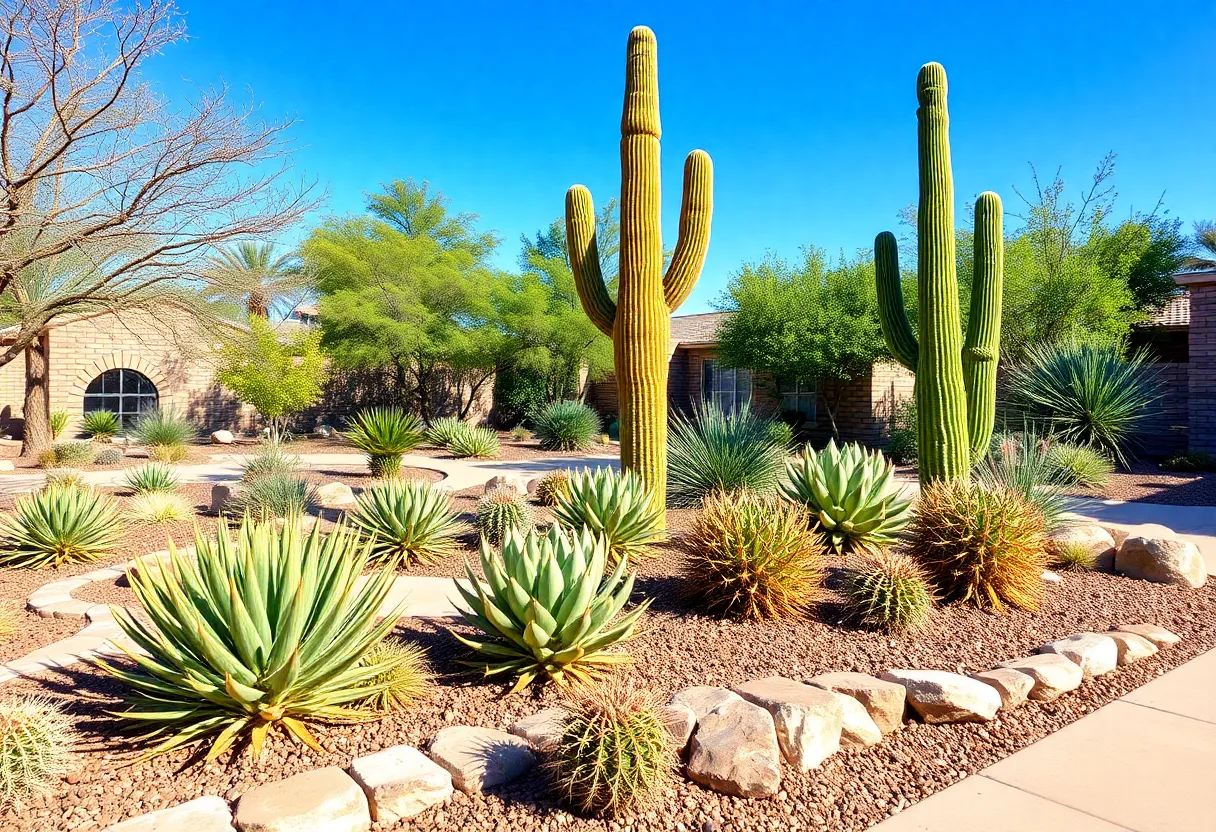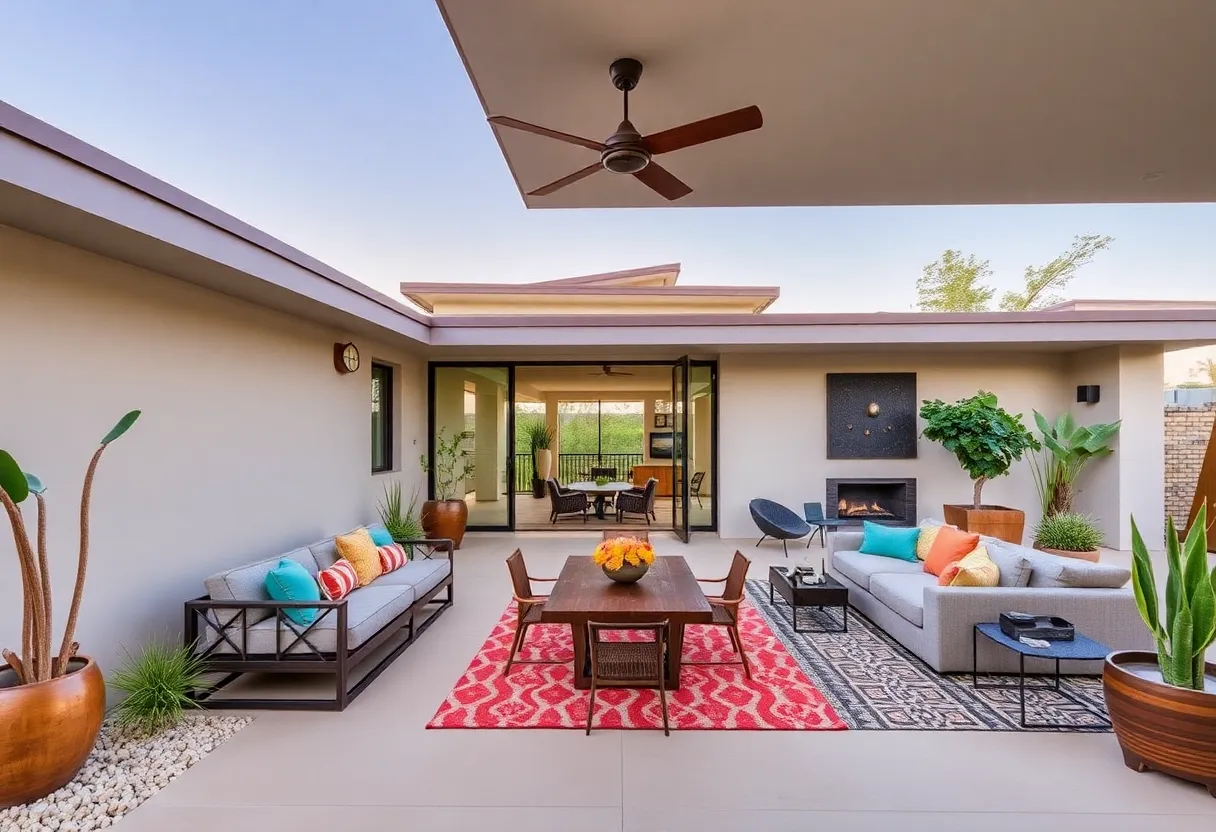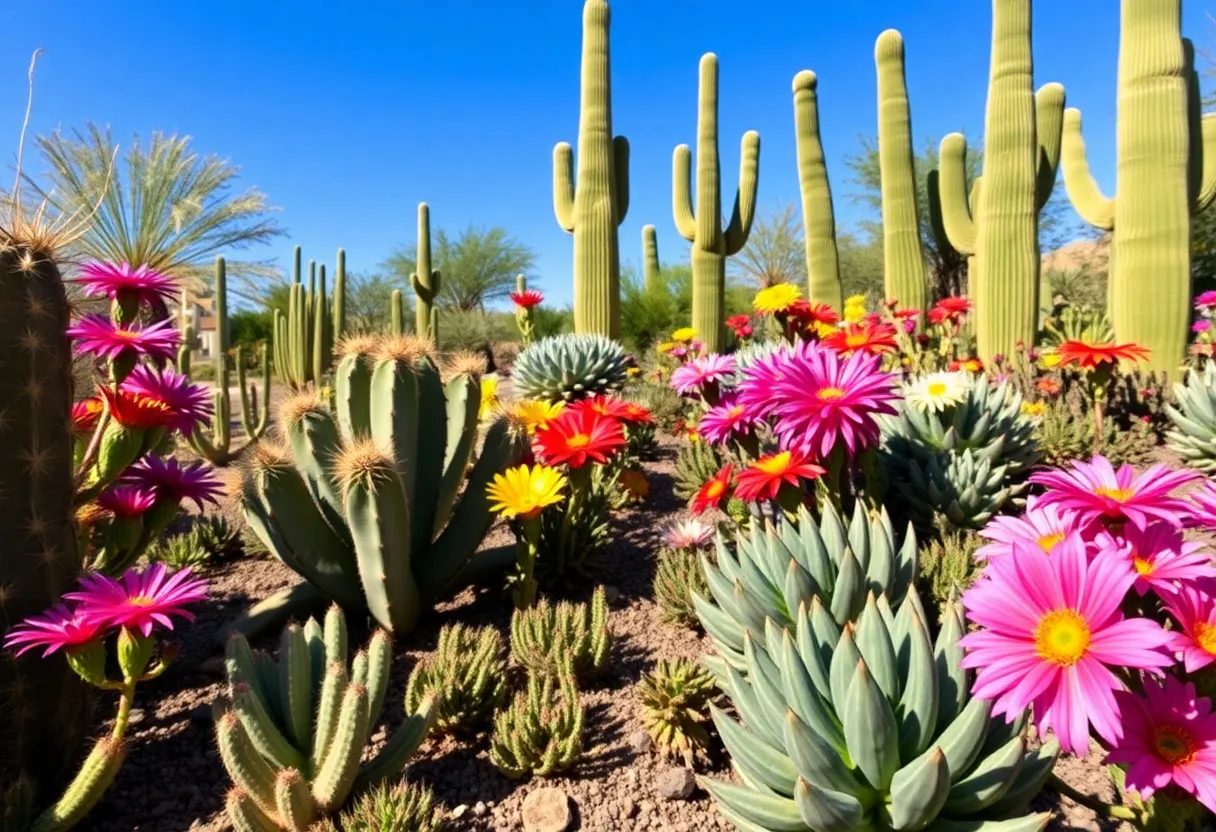Designing a Beautiful Xeriscape Garden in Phoenix’s Dry Climate: Strategic Planning and Plant Selection
Creating an *aesthetic and water-efficient* landscape in Phoenix requires deliberate planning, understanding of native plant species, and effective water management techniques. The arid environment demands a landscape approach that minimizes water use without compromising visual appeal. This comprehensive guide underscores the foundational principles and practical strategies necessary for designing a successful xeriscape garden tailored to Phoenix’s unique climate.
Understanding Xeriscaping
Xeriscaping is a landscape design philosophy aimed at reducing or eliminating the demand for supplemental watering. This approach emphasizes the selection of native and drought-tolerant plants, effective irrigation techniques, and the utilization of materials that conserve moisture. In Phoenix, where the average annual rainfall hovers around 7 inches, xeriscaping is not just an eco-friendly trend but a necessity for sustainable landscaping. The benefits extend beyond water conservation, including lower maintenance costs, increased resilience to drought, and a landscape that harmonizes with the native environment.
Core Principles of Xeriscape Design
1. Select Drought-Tolerant Plants
The backbone of any xeriscape is choosing plants that naturally withstand dry conditions. Native species are naturally adapted to local soil, climate, and water availability. Focus on plants like succulents such as agave, aloe, and yucca.
Cacti including saguaro, prickly pear, and barrel cactus thrive with minimal water.
Native shrubs like desert lavender, brittlebush, and creosote bush add color, texture, and biodiversity.
Utilizing such plants ensures a vibrant landscape with minimal water needs and reduces maintenance requirements.
2. Group Plants by Water Needs
To optimize water efficiency, organize plants based on their water requirements. Group together those that need less water, like cacti and succulents, separately from slightly more thirsty shrubs and perennials. This practice prevents *overwatering* and allows for targeted irrigation, conserving water and promoting healthier plant growth.
3. Implement Efficient Irrigation Systems
Efficient irrigation is critical. Drip irrigation systems deliver water directly to plant roots, dramatically reducing evaporation and runoff.
Employing *smart controllers* that adjust watering schedules based on real-time weather data further enhances water conservation.
Incorporating moisture sensors reduces overwatering, maintaining soil moisture at optimal levels.
4. Use Mulch and Hardscaping Materials
Applying *mulch* like crushed rock, decomposed granite, or bark conserves moisture, controls weeds, and adds visual interest.
Hardscaping elements such as gravel pathways, stone walls, and decorative rocks reduce the need for water-intensive turfgrass. These materials blend seamlessly into the desert landscape, reducing maintenance and enhancing aesthetic appeal.
5. Incorporate Shade and Structural Elements
Plant native shade trees, such as Palo Verde, Mesquite, and Ironwood, to provide respite from the sun.
They help cool the soil, create comfortable outdoor spaces, support local wildlife, and add visual structure to the landscape.
Designing Your Xeriscape Garden
1. Assess Your Site Conditions
Before planting, evaluate your garden’s sun exposure, soil type, and drainage characteristics. Determine which areas receive full sun, partial shade, or full shade.
Understanding these factors ensures informed plant placement, promoting plant health and reducing water needs.
2. Plan Effective Plant Placement
Design your garden with layered plantings, placing taller trees and shrubs in the background or as focal points.
Use ground covers and ornamental grasses to fill gaps and add texture.
Position water-loving plants away from drought-tolerant species to optimize water efficiency.
3. Integrate Hardscaping Elements
Design pathways, seating, and decorative features with materials such as decomposed granite, flagstone, or natural boulders.
These elements complement the desert aesthetic, reduce water use, and lower maintenance demands.
4. Practice Water Conservation
Install a drip irrigation system with a *smart controller*.
Consider using rainwater harvesting techniques like *barrels* or *cisterns* to supplement irrigation.
Schedule watering during the early morning or late evening to minimize evaporation.
Maintaining a Xeriscape Garden
Consistent *observation* and *maintenance* are essential for long-term success:
- Monitor soil moisture regularly to prevent over or under-watering.
- Prune plants to remove dead or diseased material, encouraging healthy growth.
- Control weeds through mulching, which suppresses unwanted plants and reduces competition for water.
- Use organic fertilizers sparingly to nourish plants without harming the environment.
Conclusion
Designing a *beautiful* xeriscape garden in Phoenix involves deliberate *plant selection*, strategic *placement*, and efficient *water management*. By adhering to core principles like grouping plants by water needs, employing effective irrigation, and incorporating native species, you can create a *sustainable* landscape that enhances your outdoor space. Proper planning and ongoing maintenance ensure your xeriscape remains resilient, environmentally friendly, and visually appealing—resistant to Phoenix’s harsh, arid climate.
Frequently Asked Questions
What are the primary benefits of xeriscaping in Phoenix?
Benefits include significant water conservation, lower maintenance costs, increased resilience during droughts, and a landscape that complements the natural desert environment.
Which native plants are best suited for xeriscaping in Phoenix?
Ideal choices include succulents like agave and aloe, cacti such as saguaro and prickly pear, and native shrubs like desert lavender, brittlebush, and creosote bush.
How can I ensure my xeriscape garden stays water-efficient over time?
Maintain efficient irrigation with drip systems and smart controllers, mulch to conserve moisture, regularly check soil moisture, prune and remove weeds, and consider rainwater harvesting to supplement irrigation.
What hardscaping materials are recommended for xeriscaping in Phoenix?
Materials like decomposed granite, flagstone, gravel, and natural stones are preferred. They blend with the desert landscape, require minimal maintenance, and help reduce water usage by minimizing lawn areas.
Chart: Key Features of a Successful Xeriscape Garden
| Feature | Description |
|---|---|
| Native & Drought-Tolerant Plants | Plants adapted to local climate, requiring minimal water once established. |
| Efficient Watering Systems | Drip irrigation and smart controllers tailored to plant needs and weather conditions. |
| Mulch & Hardscaping | Materials that conserve soil moisture and reduce lawn or turfgrass areas. |
| Strategic Plant Grouping | Organizing plants by water needs and sunlight exposure for optimal growth and efficiency. |
| Shade Elements | Native trees and structures that provide shade, reducing soil temperatures and creating comfortable outdoor spaces. |
| Site Assessment & Planning | Understanding sun, soil, and drainage conditions to inform layout and plant choices. |
Author: STAFF HERE PHOENIX WRITER
The PHOENIX STAFF WRITER represents the experienced team at HEREPhoenix.com, your go-to source for actionable local news and information in Phoenix, Maricopa County, and beyond. Specializing in "news you can use," we cover essential topics like product reviews for personal and business needs, local business directories, politics, real estate trends, neighborhood insights, and state news affecting the area—with deep expertise drawn from years of dedicated reporting and strong community input, including local press releases and business updates. We deliver top reporting on high-value events such as the Waste Management Phoenix Open, Cactus League Spring Training, and Arizona State Fair. Our coverage extends to key organizations like the Greater Phoenix Chamber of Commerce and Visit Phoenix, plus leading businesses in technology and healthcare that power the local economy such as Intel and Banner Health. As part of the broader HERE network, including HERETucson.com, we provide comprehensive, credible insights into Arizona's dynamic landscape.





